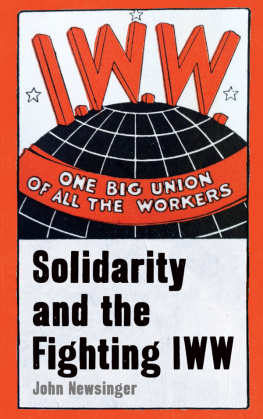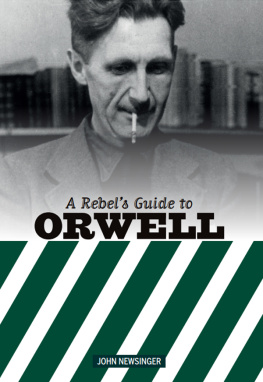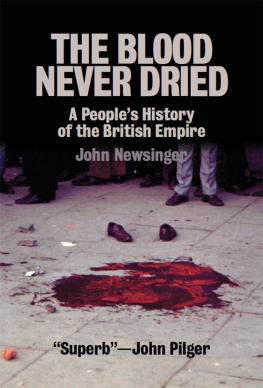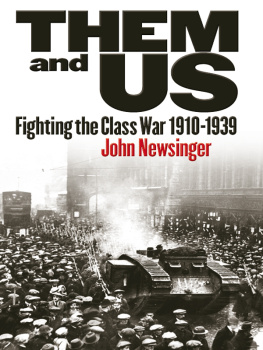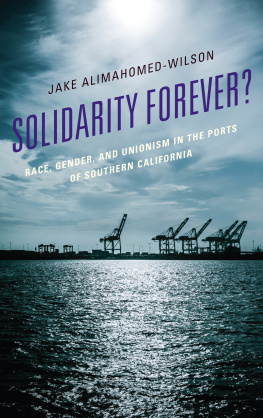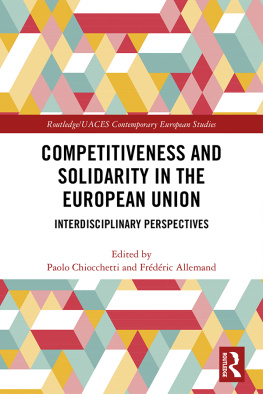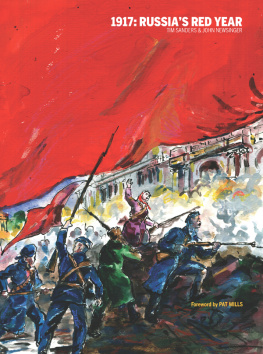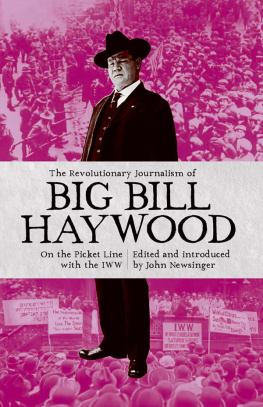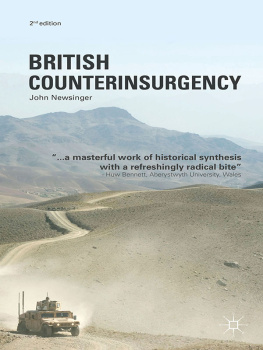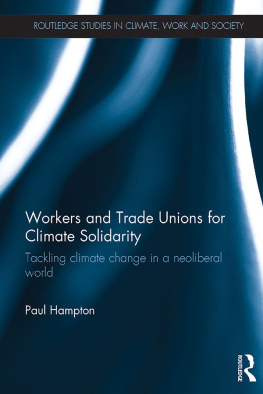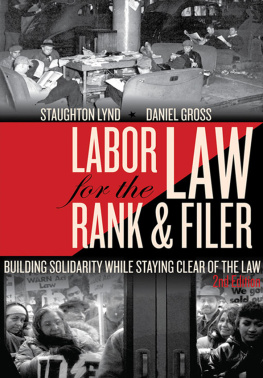John Newsinger - One Big Union Of All The Workers: Solidarity And The Fighting IWW
Here you can read online John Newsinger - One Big Union Of All The Workers: Solidarity And The Fighting IWW full text of the book (entire story) in english for free. Download pdf and epub, get meaning, cover and reviews about this ebook. year: 2017, publisher: Bookmarks, genre: Politics. Description of the work, (preface) as well as reviews are available. Best literature library LitArk.com created for fans of good reading and offers a wide selection of genres:
Romance novel
Science fiction
Adventure
Detective
Science
History
Home and family
Prose
Art
Politics
Computer
Non-fiction
Religion
Business
Children
Humor
Choose a favorite category and find really read worthwhile books. Enjoy immersion in the world of imagination, feel the emotions of the characters or learn something new for yourself, make an fascinating discovery.
- Book:One Big Union Of All The Workers: Solidarity And The Fighting IWW
- Author:
- Publisher:Bookmarks
- Genre:
- Year:2017
- Rating:4 / 5
- Favourites:Add to favourites
- Your mark:
- 80
- 1
- 2
- 3
- 4
- 5
One Big Union Of All The Workers: Solidarity And The Fighting IWW: summary, description and annotation
We offer to read an annotation, description, summary or preface (depends on what the author of the book "One Big Union Of All The Workers: Solidarity And The Fighting IWW" wrote himself). If you haven't found the necessary information about the book — write in the comments, we will try to find it.
One Big Union Of All The Workers: Solidarity And The Fighting IWW — read online for free the complete book (whole text) full work
Below is the text of the book, divided by pages. System saving the place of the last page read, allows you to conveniently read the book "One Big Union Of All The Workers: Solidarity And The Fighting IWW" online for free, without having to search again every time where you left off. Put a bookmark, and you can go to the page where you finished reading at any time.
Font size:
Interval:
Bookmark:
One Big Union of All the Workers
Solidarity and the Fighting IWW
John Newsinger
About the author
John Newsinger is a long-standing member of the Socialist Workers Party. He has been a senior shop steward in the Amalgamated Union of Engineering Workers (AUEW), a school rep in the National Union of Teachers (NUT) and branch chair in the University and College Union (UCU). He is the author of numerous books including Orwells Politics (Macmillan, 2000); Fighting Back: The American Working Class in the 1930s (Bookmarks, 2012); The Blood Never Dried: A Peoples History of the British Empire (Bookmarks, 2013); Jim Larkin & the Great Dublin Lockout of 1913 (Bookmarks, 2014); British Counterinsurgency (Palgrave Macmillan, 2015); The Revolutionary Journalism of Big Bill Haywood: On the Picket Line with the IWW (Bookmarks, 2016) and co-author with Tim Sanders of the graphic novel 1917: Russias Red Year (Bookmarks, 2016).
the Workers
Fighting IWW
John Newsinger

One Big Union of All the Workers:
Solidarity and the Fighting IWW
John Newsinger
Published 2017 by Bookmarks Publications
c/o 1 Bloomsbury Street, London WC1B 3QE
Bookmarks Publications
Cover design by Ben Windsor
Cover picture: Illustration from an early IWW publication.
Printed by Melita Press
ISBN print edition: 9781910885567
ISBN Kindle: 9781910885574
ISBN e-Pub: 9781910885581
ISBN PDF: 9781910885598
1 Founded on the class struggle:
The birth of the IWW
2 Undesirable citizens:
The attempt to lynch Bill Haywood
3 Ignorant foreign labour:
McKees Rocks, 1909
4 Gurley Flynn will be the boss:
Women workers and the IWW
5 Hanging is none too good for them:
IWW free speech campaigns
6 The IWW has stood with the negro:
The IWW and black workers
From the time of its foundation in 1905 through to the repression of the war years that culminated in the great Chicago trial in 1918, the Industrial Workers of the World (IWW or Wobblies) fought tirelessly for a socialist revolution in the United States. The determination, ingenuity and courage of its members in the face of brutal, often murderous opponents still remains an inspiration to socialists throughout the world today.
This volume is certainly not intended as a full history of the IWW, but merely as an introduction to that history, hopefully encouraging the reader to both learn more about and to be enthused and inspired by the battles fought by this remarkable organisation. And, of course, the history of the IWW continued into the post-war years in the United States and indeed continues today. Nevertheless, part of the argument put forward here is that in the post-war period, the revolutionary politics of the IWW were superceded, not just in the United States but worldwide.
As Jim Cannon, a former Wobbly and Communist and later one of the founders of American Trotskyism, put it, the IWW was the great anticipation. Even so there is still much that we can learn from the IWW. And their revolutionary example, mistakes and all, remains exemplary.
The birth of the IWW
On Tuesday 27 June 1905, Bill Haywood of the Western Federation of Miners (WFM) called the first and founding convention of the IWW to order. He told the 200 delegates and observers assembled in Brands Hall, Chicago, that they had come together to confederate the workers of this country into a working class movement that shall have for its purpose the emancipation of the working class. It was their intention to give the working class control of the machinery of production and distribution, without regard to capitalist masters. They recognised that there is a continuous struggle between the two classes, the capitalist class and the working class, and consequently this organisation will be formed, based and founded on the class struggle, having in view no compromise and no surrender.
The convention brought delegates from 43 organisations representing some 60,000 workers together with a number of individuals, including Lucy Parsons, the African American anarchist and widow of one of the Haymarket martyrs (four US political prisoners who were hanged in Chicago in November 1887); Mother Jones, the mineworkers organiser; and Eugene Debs, the leader of the left wing of the reformist Socialist Party and himself a veteran trade unionist. Also attending the convention was Daniel De Leon, the autocratic leader of the Socialist Labour Party (SLP), a theoretically rigid and sectarian Marxist organisation. They gathered in response to what they saw as a crisis within the US labour movement where the conservative union leaders of the American Federation of Labour (AFL) were failing to defend the working class against the attacks of a rapacious, brutal capitalist class.
Many American employers were prepared to resist unionisation by armed force, employing their own armed guards and hiring private detective agencies to break strikes and smash union organisation. The methods that the employers used to keep out the unions extended from blacklisting all the way through to assassination. Trade unions in the United States were at best only semi-legal and often operated in police state conditions, except that unlike Tsarist Russia, the secret police were privatised, the likes of the Pinkertons, Baldwin-Felts, Thiel and the Burns Agencies and hundreds of other outfits, large and small. The Pinkertons alone had some 30,000 agents on their books. The labour spy operating in the workplace and the union branch was part of the everyday experience of the trade union activist in the United States, something most history books neglect.
The AFL was completely incapable of taking on these employers. Instead of uniting the working class, it divided them, first of all by craft and then by often refusing to organise black workers, women workers, immigrant workers and unskilled workers. Solidarity was opposed by the union leaders, with union members routinely crossing the picket lines of another union, even one attempting to organise in the same industry. The unions were dominated by corrupt bureaucrats who preached class collaboration, argued that the capitalists and the workers had the same interests and actively opposed militancy. These were capitalisms labour lieutenants. Indeed, many of these men aspired to become capitalists themselves. They often never bothered to maintain even the pretence of democracy, but ruled as autocrats, prospering while their members were ground down.
As Debs told the convention, the pure and simple unionism championed by the AFL has long since outgrown its usefulness. It was not only in the way of progress, but has become positively reactionary, a thing that is but an auxiliary of the capitalist class. To all intents and purposes, the AFL is today under the control of the capitalist class. Recent often bitterly fought strikes that had all ended in defeat proved as much. He called for the establishment of a new union movement based on the class struggle. Another delegate, William Trautmann of the United Brewery Workers, one of the convention organisers, proclaimed their objective as to establish revolutionary syndicalism in the United States.
In place of the AFL, the convention determined to build a new union movement, the Industrial Workers of the World, democratic through and through and based on industrial organisation whereby all the workers in one industry would be organised in the same union. The employers would be unable to play the different crafts off against each other or divide the skilled from the unskilled, men from women, black from white, native from immigrant. Instead they would confront a united union movement founded on militancy and solidarity, on the principle that an Injury to One is the Concern of All, organising the whole working class for the eventual takeover of the means of production and the establishment of socialism.
Next pageFont size:
Interval:
Bookmark:
Similar books «One Big Union Of All The Workers: Solidarity And The Fighting IWW»
Look at similar books to One Big Union Of All The Workers: Solidarity And The Fighting IWW. We have selected literature similar in name and meaning in the hope of providing readers with more options to find new, interesting, not yet read works.
Discussion, reviews of the book One Big Union Of All The Workers: Solidarity And The Fighting IWW and just readers' own opinions. Leave your comments, write what you think about the work, its meaning or the main characters. Specify what exactly you liked and what you didn't like, and why you think so.

